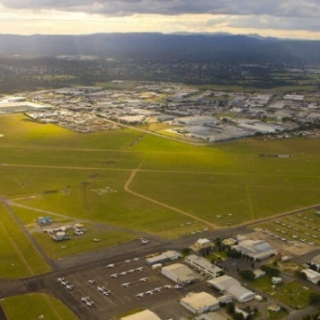
By Keith Tonkin (Managing Director of Aviation Projects)
Aviation Projects develops innovative solutions to complex aviation problems and 2018 already looks challenging for those working in the aviation sector with increased competition for limited infrastructure and traveller spend. Last year, increases in long haul low cost travel, constrained airport infrastructure, and complicated regulatory changes put additional pressure across the sector and, for us here at Aviation Projects, we expect the following trends to impact on the sector in 2018.
Taller wind farms
More wind farms are progressing from planning approval to construction. We predict increased wind turbine heights (up to 280 m or more contrasted with current average tip heights of around 130-160m).
... accessing low wind
Many wind farms with these taller turbines are expected to be located in areas of low wind with economic feasibility being a true business driver. It’s anticipated that these tall turbines will be able to capture significantly more wind as well as requiring less wind speed to turn.
…and the use of more obstacle lighting
With larger wind farms using taller wind turbines, we predict that this may impact on aviation safety and greater diligence and attention needs to be directed towards this issue. Obstruction hazards need to be highlighted to pilots and we believe that 2018 will see this issue rise to the fore with obstacle lighting being a potential consideration for new wind farm builds, and so we believe that there may be increased numbers of wind farms with obstacle lighting.
Increased scope of drone operations
A significant increase in the range and payload of drones may be of concern for aviation safety in 2018. Complicating this will be increased drone automation which will allow autonomous operation and automatic data transfer and analysis, and a potential need for drones that are more nimble as they increasingly make inflight decisions and undertake adaptive flight planning.
…creating more impacts on aviation safety
Increases in drone numbers and size, combined with increased height and size of wind farms may impact on planning scheme restrictions as well as increasing demand for safe airspace for all users. Complicating this will be pressure from developers to increase building heights and a need for cranes to operate at increased heights to build structures that were never contemplated in Airports (Protection of Airspace) Regulations and other development controls.
…especially nationally
Additionally, aerodrome safeguarding may require a strengthening of the National Airport Safeguarding Framework (NASF) to both protect community amenity, as well as guarantee and protect national aviation safety requirements in the area of land use planning.
Regional airports
Regional airports are currently feeling significant pinch in terms of changing security requirements, financial sustainability, operational risk, planning for the future, management expertise, ageing infrastructure, and the potential effects of an updated MOS 139. We predict this to continue in 2018 with potential pressure on regional airports to provide access to service whilst still being burdened by increasing airport costs and lagging infrastructure.
…and regional airlines
Some regional airlines are being challenged with new foreign pilots being allowed to operate in Australia, airlines cancelling services due to lack of qualified pilots, airlines threatening to withdraw services because of the potential for higher aeronautical charges (and negotiating favourable pricing agreements from aerodrome owners), new entrants targeting specific segments and the impact on local aerodrome users. We believe that this may continue in 2018 and may be exacerbated by the recent increase in the use of unregulated aerodromes and helipads.
…being impacted by new challenges
Unregulated aerodromes are feeling significant pressure from aircraft operators trying to minimise costs whilst infrastructure owners are working hard to manage safety and liability risk. This is occurring in the rural and regional sector where local planning authorities control developments around aerodromes as well as in larger metropolitan areas where the sector is plagued by larger aircraft competing for access.
Increased noise, building induced wake turbulence and increased population may mean that many helipads will no longer be acceptable under the draft NASF guidelines.
…and developing technologies
Adding to the above will be a raft of changes resulting from technological advances and industry or market opportunities. For example, facial recognition has recently been trialled at Brisbane Airport and resulted in a 70% reduction in processing times for boarding and check-ins. We predict that this may be rolled out more broadly across Australia.
Other 2018 predictions include improvements in 3-D printing which have the potential to reduce aircraft weight and improve efficiencies in customisation. Flying cars, solar and electric aircraft will become a reality in 2018. The important point for us at Aviation Projects is to stay abreast of these changes and make sure that we continue to scan the sector and review all issues relevant to aviation from the ground up.
Aviation Projects
Aviation Projects can help you resolve your 2018 operational and strategic management concerns through expert opinion and evaluation. We help develop innovative solutions to complex aviation problems.
Call us today on +61 7 3371 0788.
Tags: Aviation Trends, Aerodrome Safeguarding, Drones, Airport Master Planning, Regional Airport, Wind Farm, National Airport Safeguarding Framework
